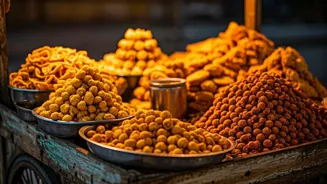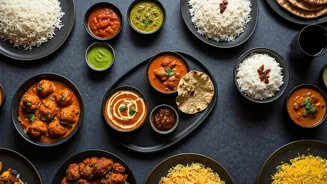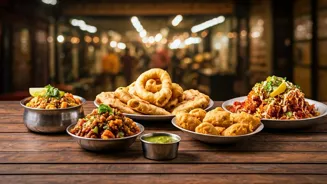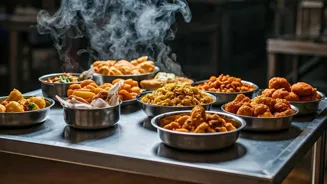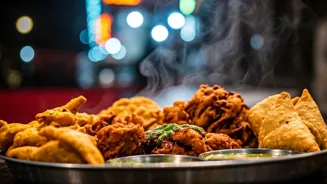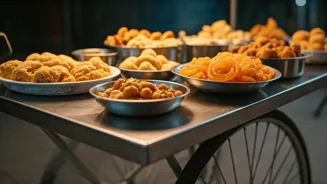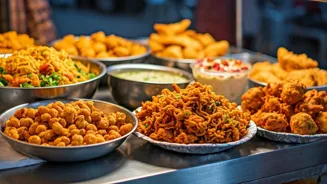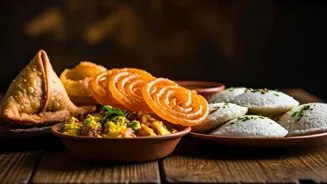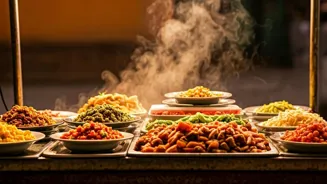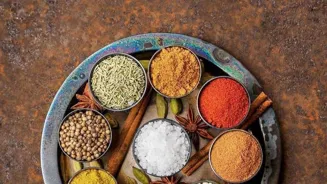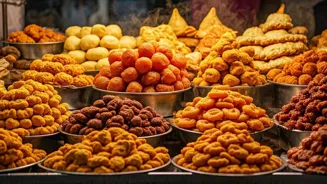The Viral Video
The YouTube video, featuring a foreign traveler sampling 'famous dirty street food' in India, rapidly gained traction online. The YouTuber's unfiltered
reaction became a point of discussion. The video documented the traveler's consumption of various street food items, showcasing his expressions as he tasted each dish. These responses ranged from excitement and enjoyment to expressions of concern regarding hygiene. The video's popularity stemmed from the raw, unscripted nature of the reactions. The footage offered a look into a cultural exchange, prompting viewers to consider the perspectives of those unfamiliar with the local cuisine and its practices. The viral nature of the video amplified its impact, triggering discussions about food safety, cultural nuances, and perceptions.
Unpacking the Reactions
The YouTuber's expressions in the video were varied, reflecting the diverse nature of the street food experience. Some dishes were met with visible enjoyment, while others elicited more hesitant reactions. The element of 'unhygienic' presentation clearly affected the traveler. It brought up concerns about health and safety. This highlighted the importance of food handling practices and their influence on the overall perception of food quality. The video served as a mirror to the street food culture, reflecting both its appeal and its challenges. Viewers reacted with a spectrum of opinions, with some defending the culinary traditions and others echoing the concerns raised by the foreign visitor. The video catalyzed a wider conversation about food standards and the visitor's experience.
Street Food Staples
Indian street food presents a rich tapestry of flavors, textures, and ingredients. The YouTuber encountered a variety of popular items, including the iconic Pani Puri, various chaats, and other snacks. These dishes showcase the diversity of regional cuisines within India. Pani Puri, for example, typically comprises a crispy hollow puri filled with flavored water, tamarind chutney, and potato or chickpea filling. Chaats, with their blend of sweet, sour, and spicy flavors, are another popular staple. Each region offers unique variations, making street food an essential part of the Indian culinary experience. The street food scene in India offers a cheap and accessible way to explore the country's diverse culinary traditions.
Hygiene and Perception
The viral video sparked a debate on the hygiene standards of Indian street food. While some viewers defended the traditional methods, others echoed the YouTuber's concerns about cleanliness and food safety. The perception of hygiene plays a major role in how people respond to street food. It is essential to address the standards of the food itself, including ingredients, handling, and preparation. The video prompted a discussion on the need for both maintaining culinary traditions and upholding basic health standards. This debate extends to the roles of food vendors, the local authorities, and the consumers in maintaining the safety and quality of street food.
Cultural Exchange
The YouTube video facilitated a cultural exchange, offering a glimpse of how an outsider perceives Indian street food. The traveler's reactions offered a window into a different cultural perspective, enabling viewers to understand how cultural backgrounds can impact how one experiences food. These varied reactions became valuable opportunities for dialogue and introspection. The video reminded people to reflect on the values and standards that shape their own culinary traditions. It highlighted the importance of empathy and cross-cultural understanding, particularly when it comes to food and culinary practices.
The Bigger Picture
The viral video about Indian street food represents a microcosm of the larger trends in global food tourism. It highlights the growing interest in experiencing local cuisines and the challenges inherent in managing cultural exchange and ensuring food safety. The video also highlighted the power of social media to facilitate these exchanges. It also demonstrated how simple acts, such as sampling food, can spark widespread discussions on cultural sensitivity, standards, and perspectives. Ultimately, the video's impact extended beyond the food itself, prompting viewers to consider the wider implications of food tourism, cultural understanding, and the impact of food in bridging cultural divides.
